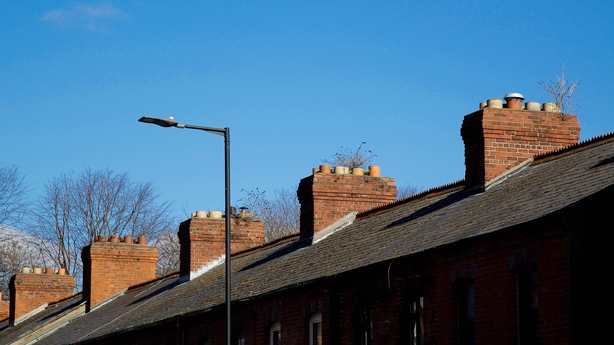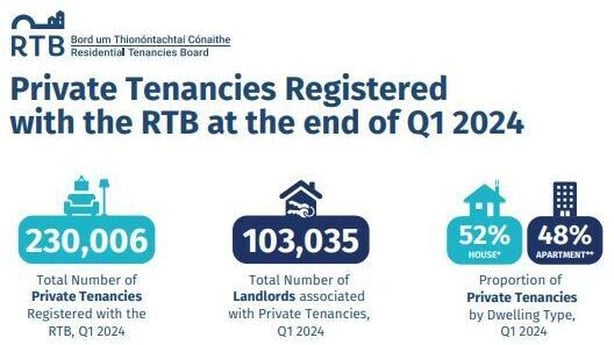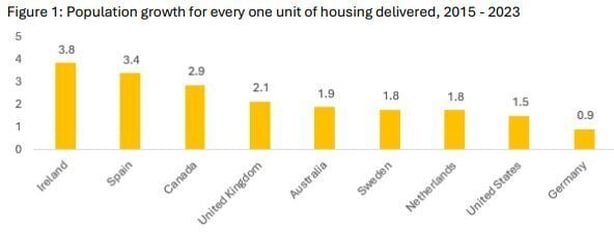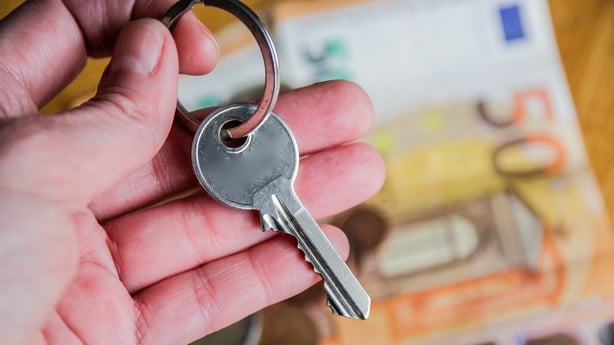In the end, it always comes back to housing.
And for political parties trying to convince people their candidate can - both figuratively and literally - give their vote a home, the past two weeks have again placed the ongoing issue firmly at the centre of the pre-general election campaign build-up.
Since the start of this month no less than three independent reports on the make-up of the rental market, house price inflation, and how the number of new homes is failing to keep up with the number of people needing them, have all made headlines.
In response, political parties have been keen to both attack their opponent and defend their own record, resulting in the latest claims and counter claims coming this week in the form of allegations of "Donald Trump"-esque Government spin and hollow opposition rhetoric.
The traded barbs on their own will of course do little to actually address the complicated issues and genuinely held competing interests at the heart of the housing crisis, never mind put a roof over anyone's head.
But, given the latest Ipsos/Irish Times opinion poll has suggested housing remains the number one issue for voters, it is inevitable the back and forth between Government and the Opposition will continue in the months to come before the general election is finally called.

Recent evidence
The facts outlined over the past fortnight underline the reason why.
Since the start of August, three independent reports on the housing sector have outlined the starkness of the issue.
The first of these reports came on 8 August, when a new data hub launched by independent body the Residential Tenancies Board (RTB) outlined the lay of the land in the rental sector.
According to the RTB figures, between summer 2023 and March of this year the number of rental tenancies in Ireland rose to 230,006 - a 7.9% jump.
The same data found that the number of private landlords in Ireland also rose during that same period to 103,035 - a 7% rise.
The RTB figures confirmed that the number of tenancies connected to corporate landlords - in other words companies with 100 or more properties rented out - rose from 9.5% of total tenancies to 11.17% during those months, with Dublin seeing an even higher percentage rise of 19.87% to 22.6%.

And the data hub also indicated that while there has been much talk of landlords potentially fleeing the sector due to new rules supporting renters, the actual number of smaller landlords in the sector has remained static, at 26%.
The facts were clear: the number of people renting is rising, corporate landlords are increasing their involvement, and smaller traditional landlords are not showing any signs of departing any time soon.
This week, a second independent report - from the Central Statistics Office - gave a potential indication as to why.
According to Wednesday's CSO findings, residential property prices are now higher than at the peak of the Celtic Tiger era, with the past year alone seeing the highest rate of property price inflation in Ireland since October 2022.
The figures show that between June 2023 and June this year, the national average house price rose by 8.6%, with the monthly rise rate increasing from 0.4% in May to 0.7% in June.
In Dublin, prices rose an average of 10% in the past year, while outside of Dublin they grew by 8%, with the median price of a home in Ireland now €337,500 - including a low median rate of €169,000 in Longford and a high of €630,000 in Dún Laoghaire-Rathdown.
Good news for some, very bad news for others.
And the wider view of the housing situation was further underlined by a third report on Thursday, when international property sector experts Savills said that between 2015 and last year Ireland's population growth outstripped new home construction by a rate of almost four to one.

The Savills report findings might be batted away as a reality of growing populations in the western world, except that Savills said this is not the case.
Instead, it specifically said Ireland's people-to-new-homes ratio is the widest it has seen, with other countries examined including Spain (3.4 to one ratio), Canada (2.9 to one ratio), Britain (2.1 to one), Australia (1.9 to one), Sweden (1.8 to one), Netherlands (1.8 to one), the US (1.5 to one) and Germany (0.9 to one) all seeing demand and need being far more closely aligned.
Savills said the situation in Ireland is "on a different level" to other countries - a comment that, combined with the RTB and CSO findings, has further thrown the cat amongst the political pigeons when it comes to the housing pre-general election debate.
Government view
Given the significant interest in the housing debate, it is understandable that Government has been quick out of the block on each occasion to give its version of events.
And, given how close a general election now is, it is equally understandable that version has increasingly focused on what the Government argues it has done to limit the impact of the housing crisis, if not address it completely.
Hours after the Residential Tenancies Board data on 8 August, Minister for Public Expenditure Paschal Donohoe was due to hold an unrelated briefing at the Government press centre.
It quickly became about housing, with Mr Donohoe asked by RTÉ News if the rise in corporate landlords represented a failure of coalition policy.
He argued it was far from it, saying Government has "always said we need a mix [of types of landlords] in cities".
Mr Donohoe said that "far from seeing corporate landlords as a failure", in his view the "scale" of rental properties needed due to the housing crisis means the involvement of corporate landlords "is the only way this can be done".
Asked by the Press Association with what percentage of corporate landlords in the sector he would be comfortable, Mr Donohoe said "I'm less interested in" the exact percentage "than the level" of properties in actual numbers, and repeated there should be "a mix".
Not a perfect scenario but progress is being made, was the basic message.
And one which Minister for Housing Darragh O'Brien has since repeated, saying schemes like Help To Buy - which gives new build first-time buyers a €30,000 tax free grant, and the First Home Scheme which allows new build first time buyers to receive a loan of up to 30% of the price of the new build - are ensuring the housing crisis is beginning to turn a corner.
Fast forward a week and on Thursday's Morning Ireland the Minister for Enterprise, Trade and Employment Peter Burke doubled down on the position.
In an at times heated interview, Mr Burke was asked about the surging property price figures and findings from the Savills report which said Ireland's housing crisis is "on a different level" to other countries.
"Whatever you're doing on housing, minister, it's not enough. The problem is getting worse," presenter Aine Lawlor asked.
We need your consent to load this rte-player contentWe use rte-player to manage extra content that can set cookies on your device and collect data about your activity. Please review their details and accept them to load the content.Manage Preferences
His response? To argue Government is responding to the crisis and has created "record home ownership" and "record levels" of house and apartment construction.
"I absolutely know we are in a very severe situation in relation to housing, but what I can say is judge the evidence. We are responding on a scale that is colossal.
"If you look from [the 12 months to] April 2024 over 53,000 homes have been commenced, and every quarter over 31,000 homes have been brought into the economy, that's at record levels now under this Government," he said.
When it was put to him that the Savills report concluded the situation has gotten worse in Ireland since 2015, Mr Burke was asked "you [Fine Gael] own this problem don't you?"
He responded: "Absolutely not. If you look where the economy has gone from then [2011, when Fine Gael entered office], we had a period of mass unemployment, where two thirds of our construction force left our shores, we've gotten them back now under this Government.
"And what we're doing now is building homes at record levels... and we are delivering for people. As I've said, don't listen to politicians, judge the evidence, we're at record levels of home ownership."
Opposition view
Rival politicians are not so sure, including Sinn Féin's finance spokesperson Pearse Doherty who, when asked about the Savills report and Mr Burke's view, answered in a similarly eye-catching tone.
"I heard Peter Burke today. He’s obviously been watching a lot of Donald Trump over the last while because he’s taking from his playbook.
"He claimed in modern Ireland that we have record levels of home ownership. Home ownership under this Government has been falling and that is a fact.
"Every day we’re hearing another story in terms of the failures of this Government in relation to housing, whether it’s house prices that are running away, whether it is students that are forced to take to the streets and handing out leaflets hoping that they have a place to live during their academic year.
"The unaffordability issue has got worse in the last year, from another report yesterday [the CSO figures], and again another report today [Savills] showing that home ownership is a serious issue.
"We’re not keeping in line with population growth.
"The reports are saying very, very clearly what’s happened here. The amount of homes that are being built is not at the magnitude or the scale that is required in relation to dealing with the crisis that we have," Mr Doherty told reporters at a press event at the James Joyce Centre in North George's Street.
The competing and sometimes contradicting narratives are nearly worthy of Joyce himself, leading many voters to wonder who to believe on one of the most fundamental issues facing the country at present.
And, while Paschal Donohoe dismissed Sinn Féin's criticism of Peter Burke's views later that afternoon as little more than "rhetoric", it is a position Sinn Féin - and other opposition parties - have been consistent on.
After the CSO house price figures were published, housing campaigner and Social Democrats' candidate for Dublin North West Rory Hearne said average house prices are now 10% above the Celtic Tiger peak, adding the belief some people will be unable to own a home is "the biggest crisis facing our society" and causing "huge multi-generational trauma".
Solidarity-People Before Profit have also made it clear they are opposed to the use of corporate landlords, as in their view these landlords do little to solve housing long-term. Labour leader Ivana Bacik has said her party will build one million homes - 500,000 new builds and 500,000 retro-fits - over the next decade if elected.
As the largest opposition party perhaps most attention has been on Sinn Féin, which last month put forward its own housing proposals including plans for 50,000 affordable homes and 75,000 social homes over the next five years, which it says could be capped at a price of €300,000.
Keen not to miss an opportunity to return the policy criticism usually fired in the other direction, Government at the time said the plan is unworkable.
Among those to criticise it was Darragh O’Brien, who said the Sinn Féin plan is "built on sand" as the market - rightly or wrongly - dictates prices, adding that the plan to have continued State ownership of land used for affordable homes would spell the end, rather than the beginning, of private home ownership.

What it means for voters
The housing crisis is not just about political shadow boxing of course. The issue remains a very real dilemma for a growing section of the public.
An Ipsos/Irish Times opinion poll last month found that housing continues to be the single biggest issue which may influence how people vote.
After a period in January and February when immigration briefly overtook it, housing has according to the poll been the number one issue for voters since April, with 20% of respondents in July saying it is most important - a figure that has remained between 15% and 21% since last September.
Among under 35s, the July poll suggested the rate is even higher, with the Ipsos/Irish Times survey suggesting 31% felt housing is the issue that will most influence their vote.
As always when it comes to polls, it should be said that this is only a snapshot at a particular point in time that may not be reflected when people fully consider all aspects of how a vote may affect their lives.
But it will have been lost on no politicians that, while other issues such as immigration, climate and the cost of living are also high on the agenda, the housing snapshot is a snapshot that keeps happening, and is being consistently raised during canvas door knocks across differing constituencies and age demographics.
The past two weeks have seen a fresh flurry of housing statistics and insights thrown into the political debate, the most crucial of which is what does the general public actually think.
Outside of the spin and counter spin, claim and counter claim of political sparring, how candidates and parties respond to that final point could yet decide who gets to call Government Buildings home for the next five years (or less) when the general election is eventually called.







